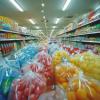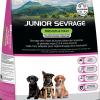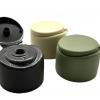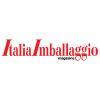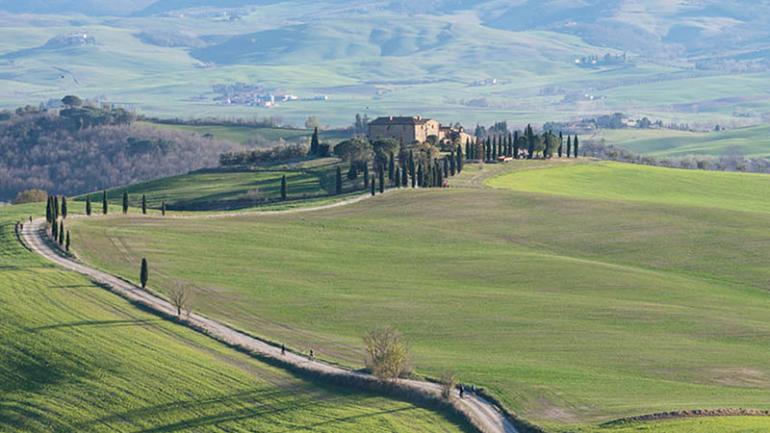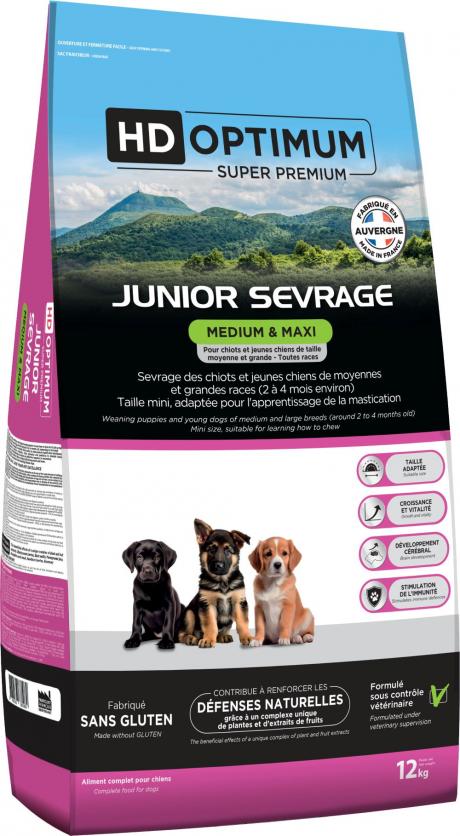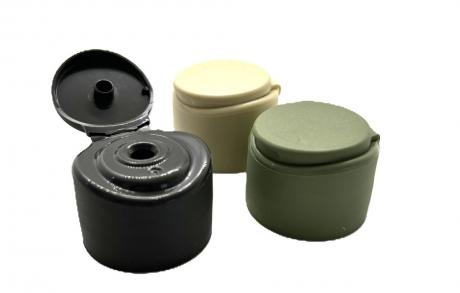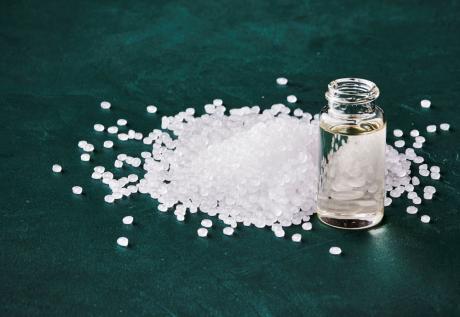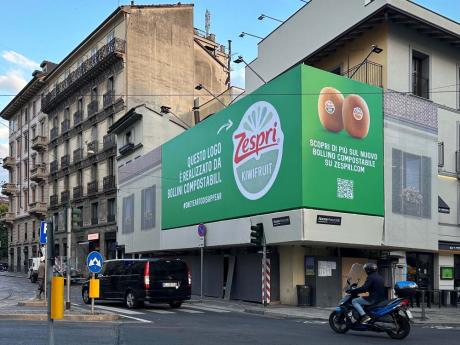Fabiana Marchini, Head of Sustainability of Sanpellegrino, tells us the strategic vision and investments at the basis of a systemic approach to environmental, social and ethical sustainability.
By Maria Costanza Candi, Luciana Guidotti
Sanpellegrino, part of the Nestlé Group, got to Earth Day 2021 by achieving important goals for the planet: from the 60% reduction in CO2 emissions in production over the last nine years, to the investment of 4 million euros per year in biofuels (LNG) for the management of the logistics chain; from the development of a series of projects to enhance the value of recycled material, to the care of what the company calls natural capital, i.e. the environment and the communities in which Sanpellegrino operates.
Impressive results, the result of a long-term corporate strategy that has led to the creation of a dedicated team, coordinated by Fabiana Marchini, Head of Sustainability, who tells ItaliaImballaggio about the strategy with which the company has established itself as a leader, not only in the beverage world but also in sustainability policies, both internally and in the markets of the 150 countries in which it operates.

Head of Sustainability of Sanpellegrino
From “nice to have”to “must have”
The value of sustainability has now been fully taken on by public opinion: how would you define the relationship between the increased sensitivity of consumers and the innovation role played by major players like your company?
Sensitivity to environmental issues is what supports our path of eco-sustainability, which began many years ago. Just think that in 2010, with Levissima, we were the first in Italy to launch a bottle with 25% recycled PET plastic (rPET); the consumer was not yet asking for this effort, but for us the circular economy was already an important theme, around which to design a strategy.
In a nutshell, everything starts from the sensitivity of the company, with an acceleration imposed by the consumer and the legislator...And the legislation, in this sense, can be seen as an opportunity or a limitation. For example, until we were not allowed to increase the percentage of recycled material in the production of bottles, we were unable to achieve a goal in which we believed a great deal: to increase the use of recycled materials from plastic. With Levissima, we were the first company to launch 100% rPET bottles.
A record that comes from afar and which demonstrates that believing in an eco-sustainable approach requires the definition of a path to be developed over time. The farsightedness of our approach, however, has allowed us to be ready for the cultural revolution triggered by Greta Thunberg, which has focused general attention on environmental issues, so much so that it has also influenced the European Green Deal of the Commission, which envisages achieving climate neutrality by 2050.
The pandemic, then, offered a further glimpse of how caring for the environment matters in health emergencies.
Sustainability is therefore not a ‘nice to have’ but a ‘must’, where each of us plays an essential role, consumers, companies and institutions.
Here is where our project to cancel the emissions of our 3 international brands Sanpellegrino, Acqua Panna and Sanpellegrino soft drinks by 2022 worldwide and along the entire supply chain features We are committed to doing this by strengthening interventions in the key areas of our business, namely packaging, production, logistics and natural capital.
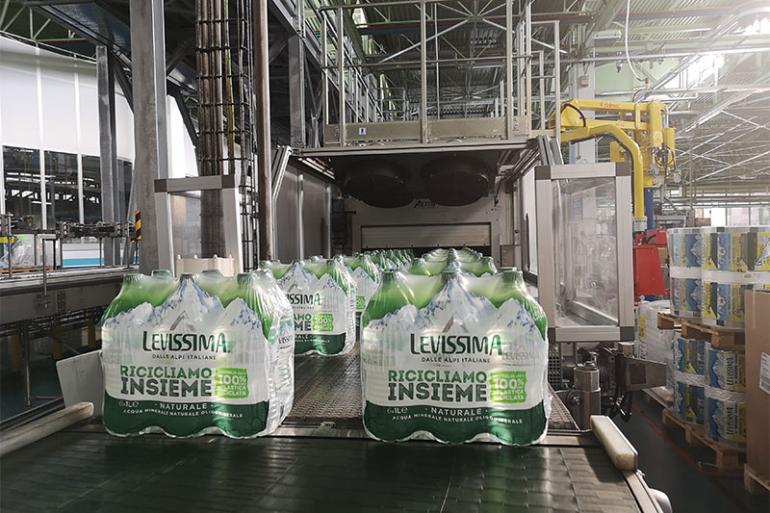
Label between training and information
In a context where companies play a fundamental role as innovation drivers, educating and informing consumers correctly takes on an ethical value, as well as a functional one, in some ways ennobling the role of labels.
The label is certainly an important vehicle through which to transfer messages, both in terms of product and sustainability. For us, for example, talking about plastic as a resource and not as waste is essential. At the launch of 100% rPET, in fact, we wrote “Let’s recycle together” on the bundle: a strong message that is a call to action involving both the company and consumers, because sustainability is a path that cannot be taken alone, but together.
Consumers today are very autonomous in their search for information, with the internet and the sharing of opinions on social networks. It is therefore essential to communicate correctly, and shelf display is not enough: we need a further step, concrete actions that give visibility to the overall commitment.
Let’s think about logistics, fundamental for our supply chain, which valorizes sustainable action and improves it. How? By optimizing loads, by using greener fleets, which we fuel with LNG, with much lower emissions than other fuels. Deciding to invest over 4 million Euros per year in the use of biofuels for land and sea transport is a very important commitment that complements our actions on packaging.
The label will therefore also contain this information, ranging from 100% rPET to the need for a virtuous approach to recycling, to a common commitment.
I repeat: plastic is not a waste but a resource, which can give life to numerous production cycles and new objects. What is needed, therefore, is an all-round story, capable of highlighting the many aspects that converge in the path of sustainable development.
Circulation and product safety: a possible combination
Talking about rPET means opening up a cross-section on the concepts of food safety, on new elements of packaging design and innovation, on the global impact of the action taken, even on logistics...
PET is one of the most virtuous and ductile materials because it is so light. In Sanpellegrino, we are committed to lightening policies, with a view to sustainability but also to full compliance with safety and quality standards. We aim for sustainable bottles “by design”, with high performance, which guarantee protection and lightness, less plastic, but full respect for the characteristics of the product.
Our carbon neutrality, relative to the three international brands, concerns the entire supply chain and the range of products distributed in the 150 countries to which we export. A fundamental and strategic commitment that has involved every aspect of the organization and that we are implementing on all fronts, based on science-based targets. We involve the supply chain from the beginning to the end, calculating the footprint in every aspect: a “round” commitment, in short, that does not only involve the image or what is perceived by the consumer, but every aspect of the product’s journey.
Sustainability in the territory and for well-being
Sustainability of packaging and product: a principle that, in addition to protecting the environment, extends to respect for the territory, sociality and food safety, closing a virtuous circle. What is your vision of new lifestyles and consumption?
There is a strong ethical correspondence in our way of doing sustainability. For Sanpellegrino it means taking care of the territory in which it operates, giving value to the communities, with actions related to the protection of natural heritage, developing plans that allow us to achieve production efficiency and energy saving. We are therefore talking about hybrid savings, eco-sustainable logistics, territorial projects in partnership: all examples of what it means to do sustainability through the reduction of packaging or the path of innovation with R&D, in favor of natural capital, which is our wealth.
On the new lifestyles front, we are active in promoting the relationship between health and sustainability. These themes are linked to recycling education, for example, because although consumers are evolving, they need clear suggestions about possible solutions to orient themselves.
With Levissima’s Regeneration program, we educate people about recycling and segregated waste collection, but we also focus attention on other things. I’m thinking of the Levissima fitness area in Milan’s Sempione Park, which we helped restore and requalify, where we combine green issues with a healthy lifestyle, recalling an essential aspect linked to our “water” product, namely proper hydration.
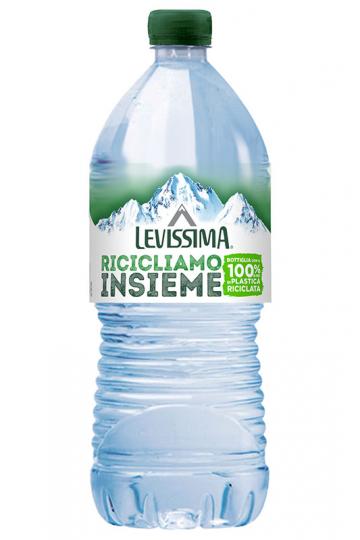
Through the Sanpellegrino Observatory, we are also engaged in an articulated program to promote the benefits of proper hydration. With “Water School”, we teach children the importance of healthy drinking and the need to recycle packaging, thus combining the idea of a sustainable future with consistent and healthy lifestyles.
Returning to the valorization of the territories in which we operate, and our commitment to the valorization of sources and water, last November we obtained AWS (Alliance for Water Stewardship) certification, which attests to the sustainable and shared management of water resources and testifies to what we are committed to doing, with a view to progressively reducing the amount of water we use. The group aims to certify all its plants by 2025. A decision that demonstrates how essential we believe it is to manage water responsibly.
Biodiversity is also an area of commitment for us. With Acqua Panna, for example, we have started a collaboration with Federparchi to enhance the territory of the Panna Reserve thanks to a census of the fauna and flora present in the areas where we operate.
This commitment demonstrates how much we care about the natural capital that we manage, also through the creation of an extraordinary team, which I have the pleasure of coordinating. Another example that shows how Sanpellegrino’s approach is systemic; the expression of a vision that comes from afar, in respecting water, in doing things that anticipate the needs of the consumer, in choosing eco-sustainable and light logistics, in using energy from 100% renewable sources in our factories, where we have a very low factory impact in terms of emissions.


